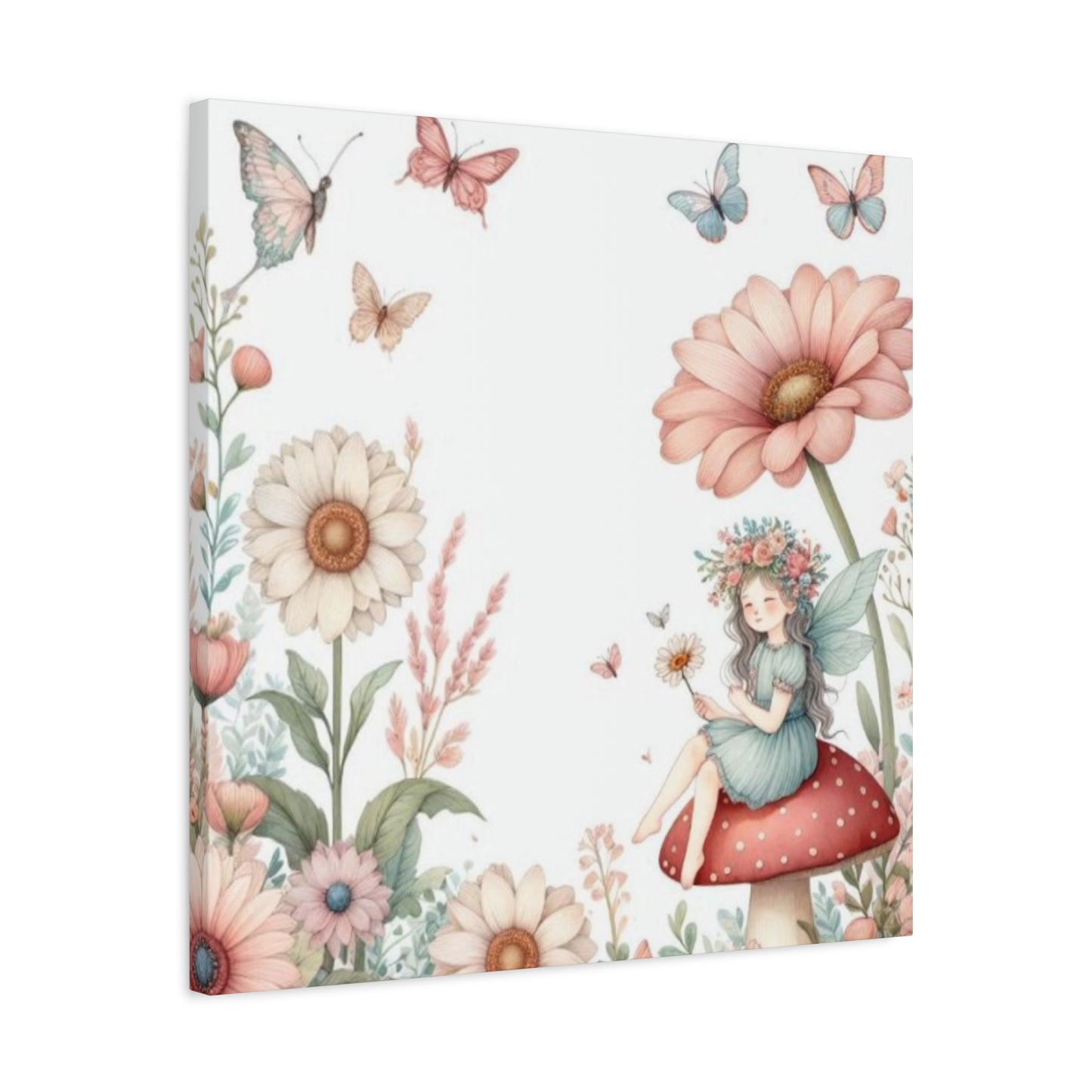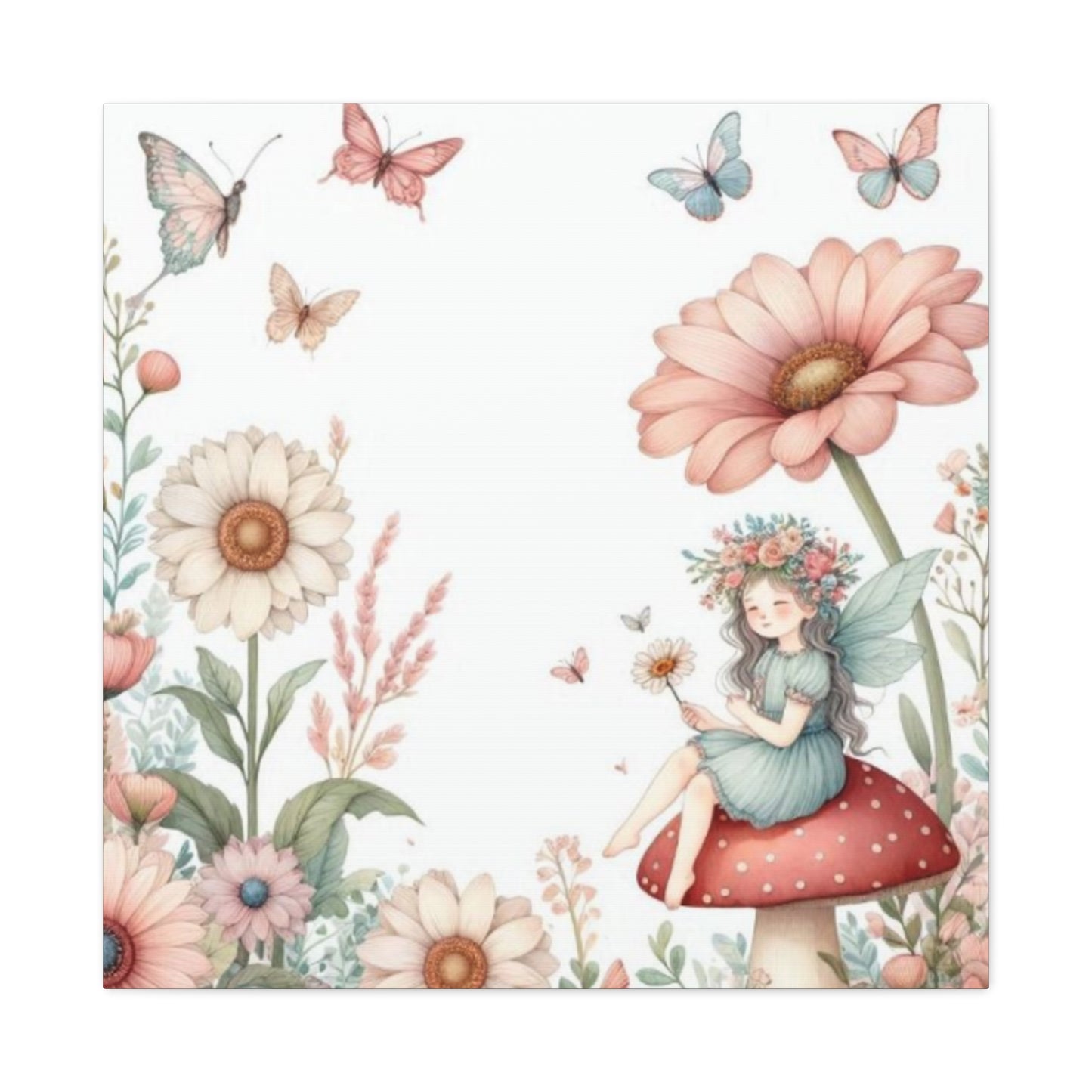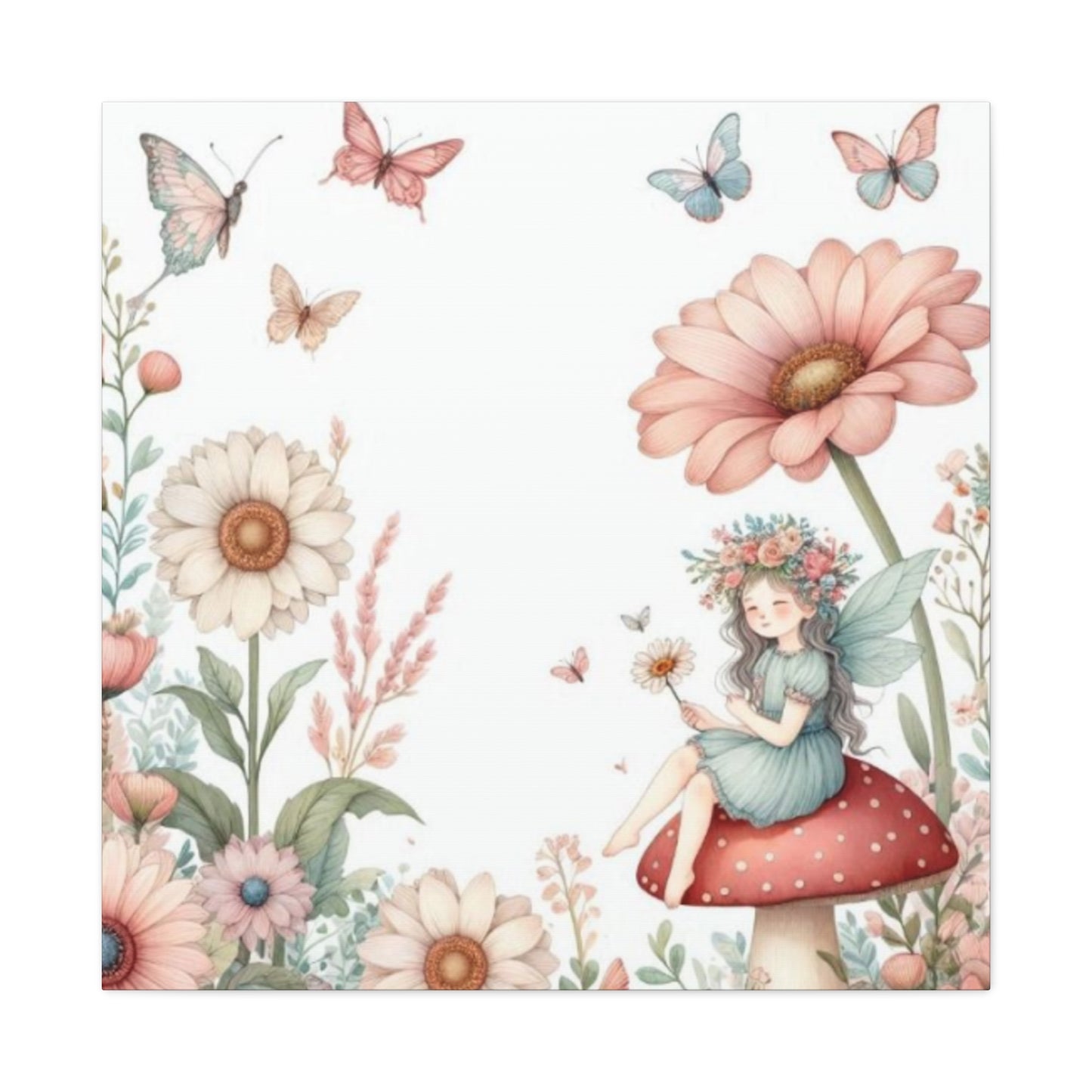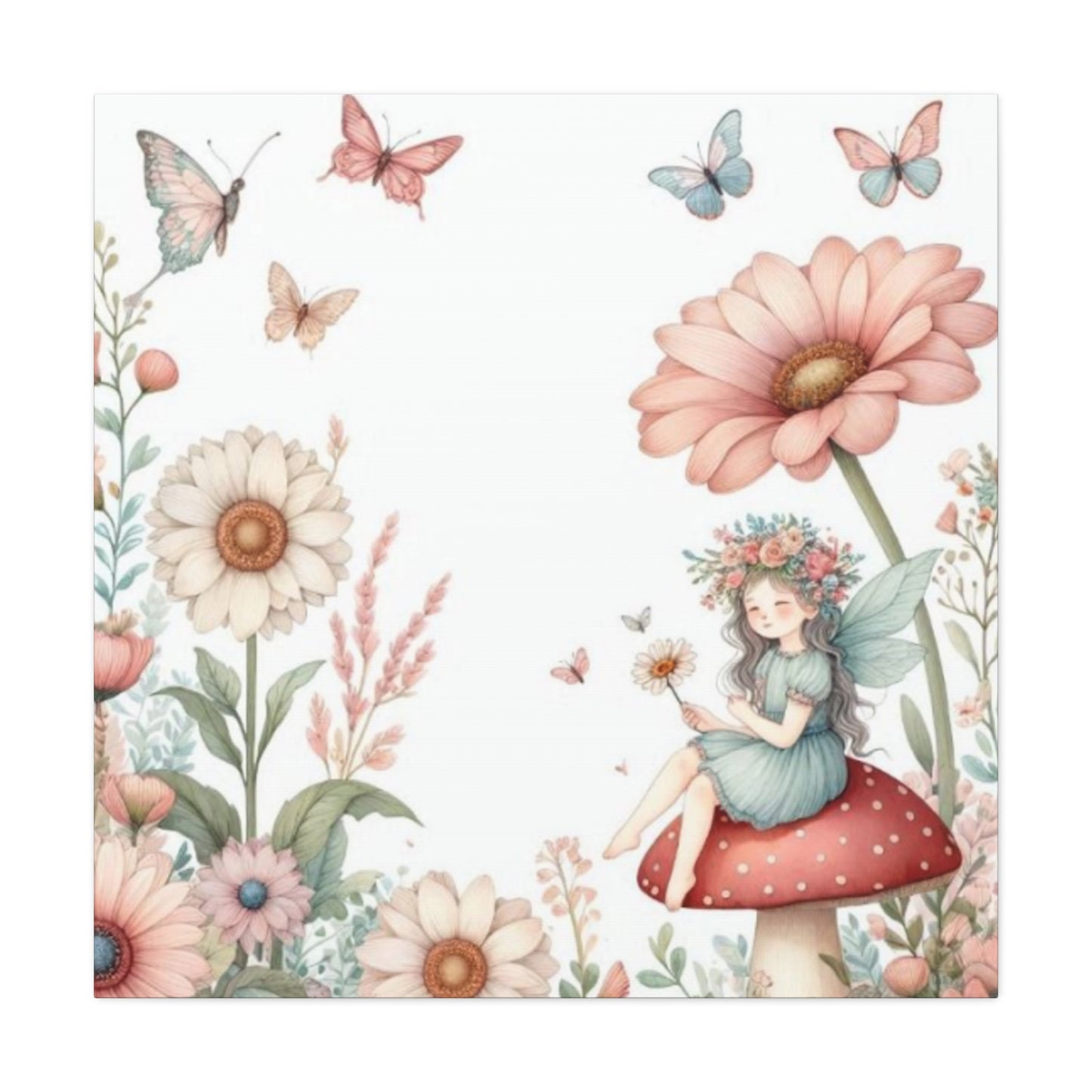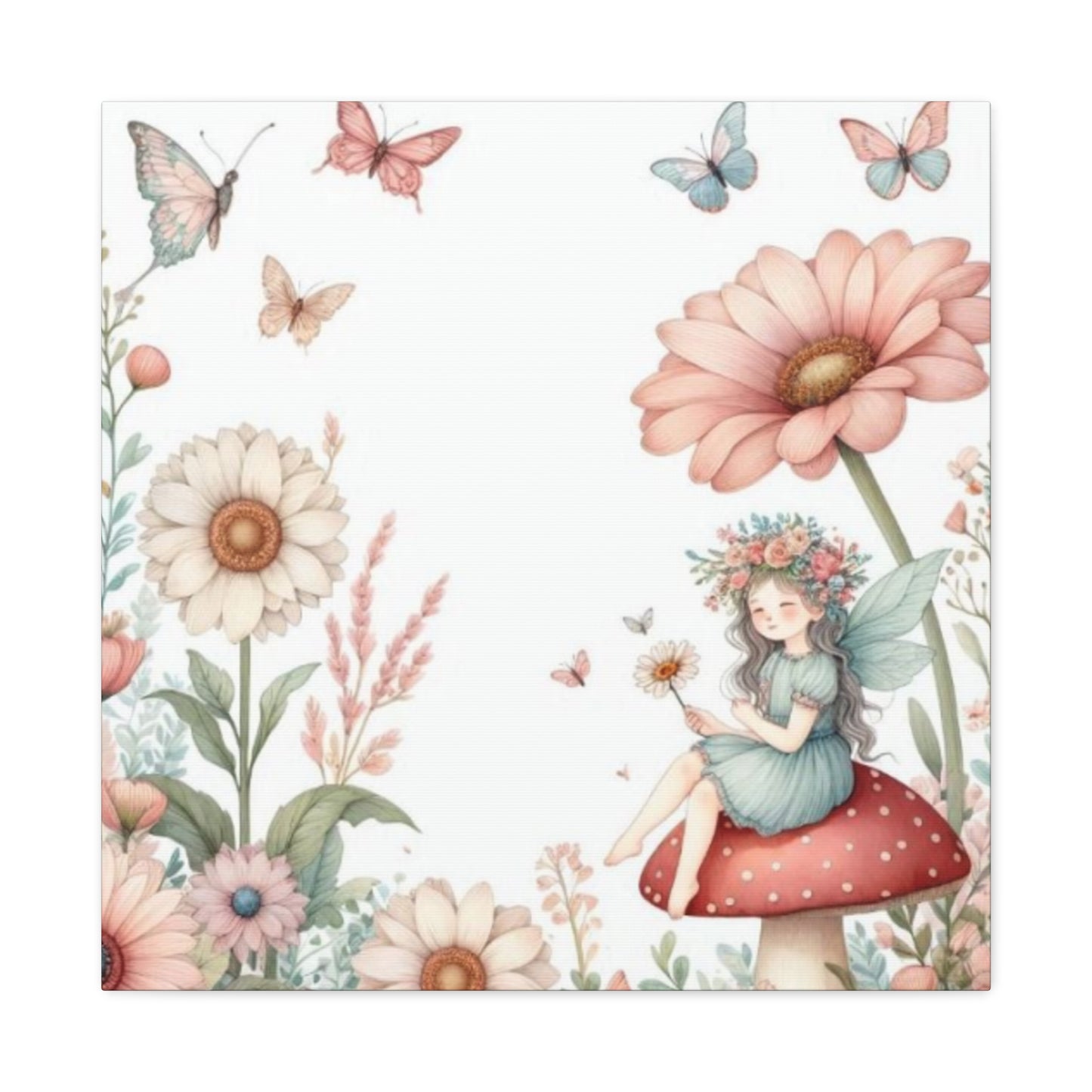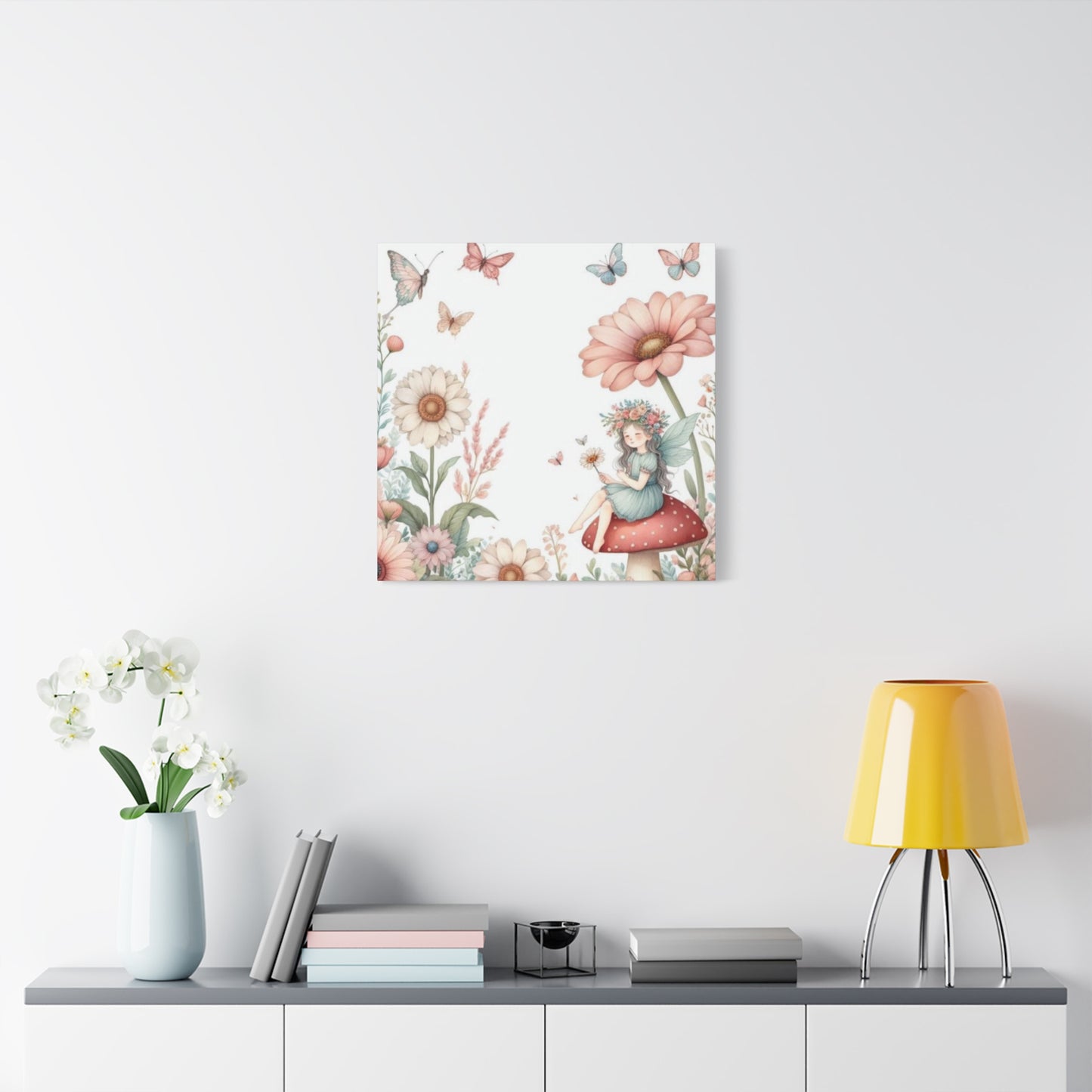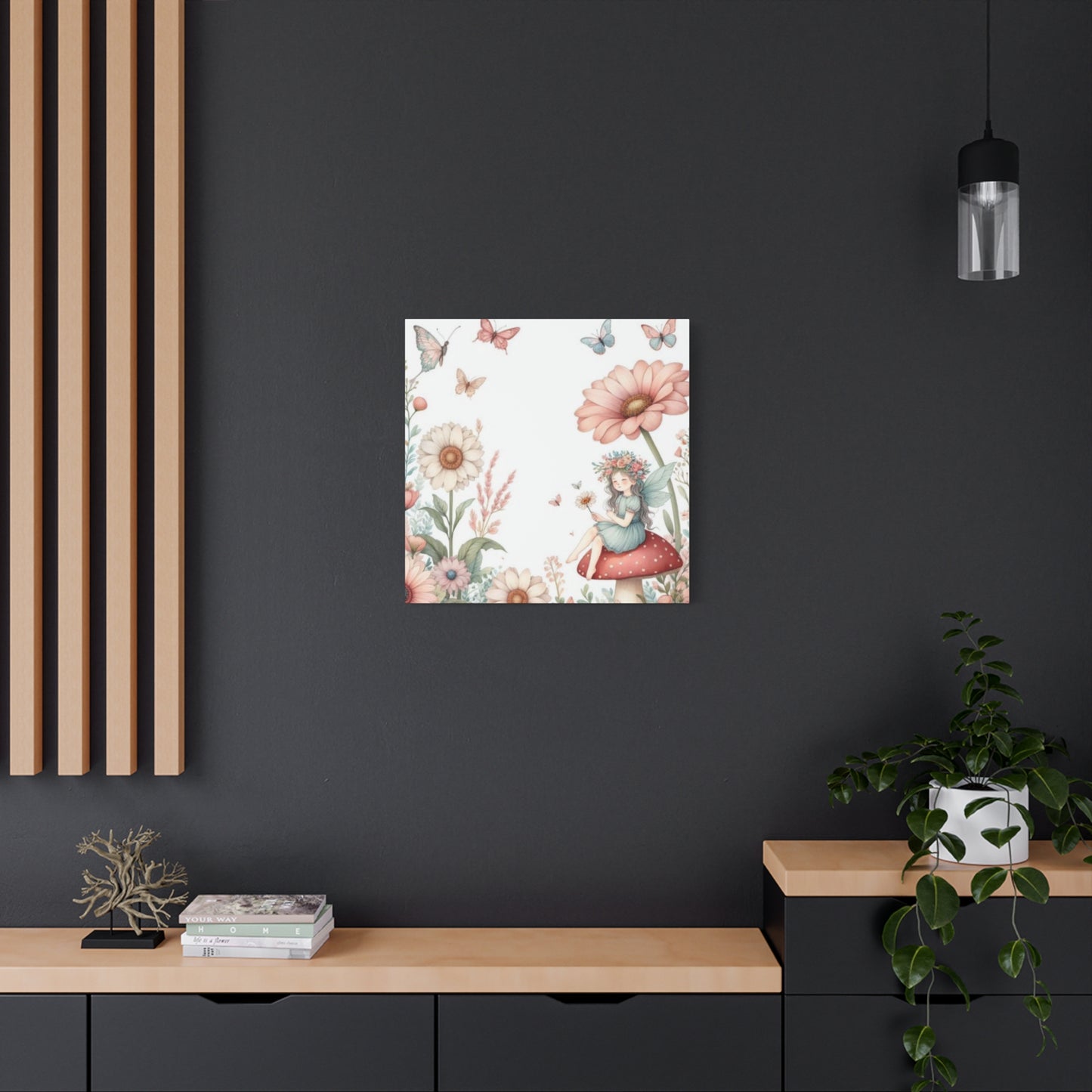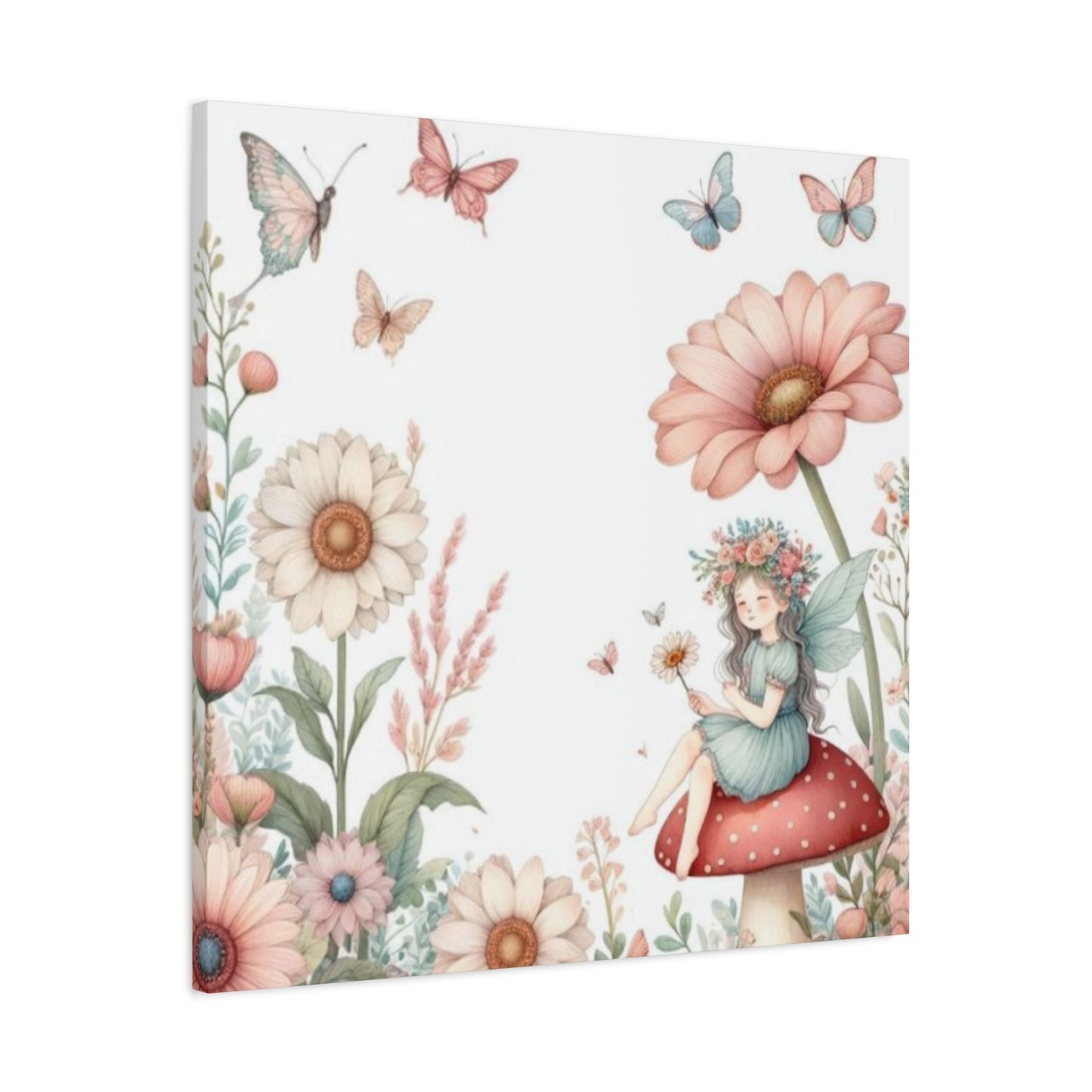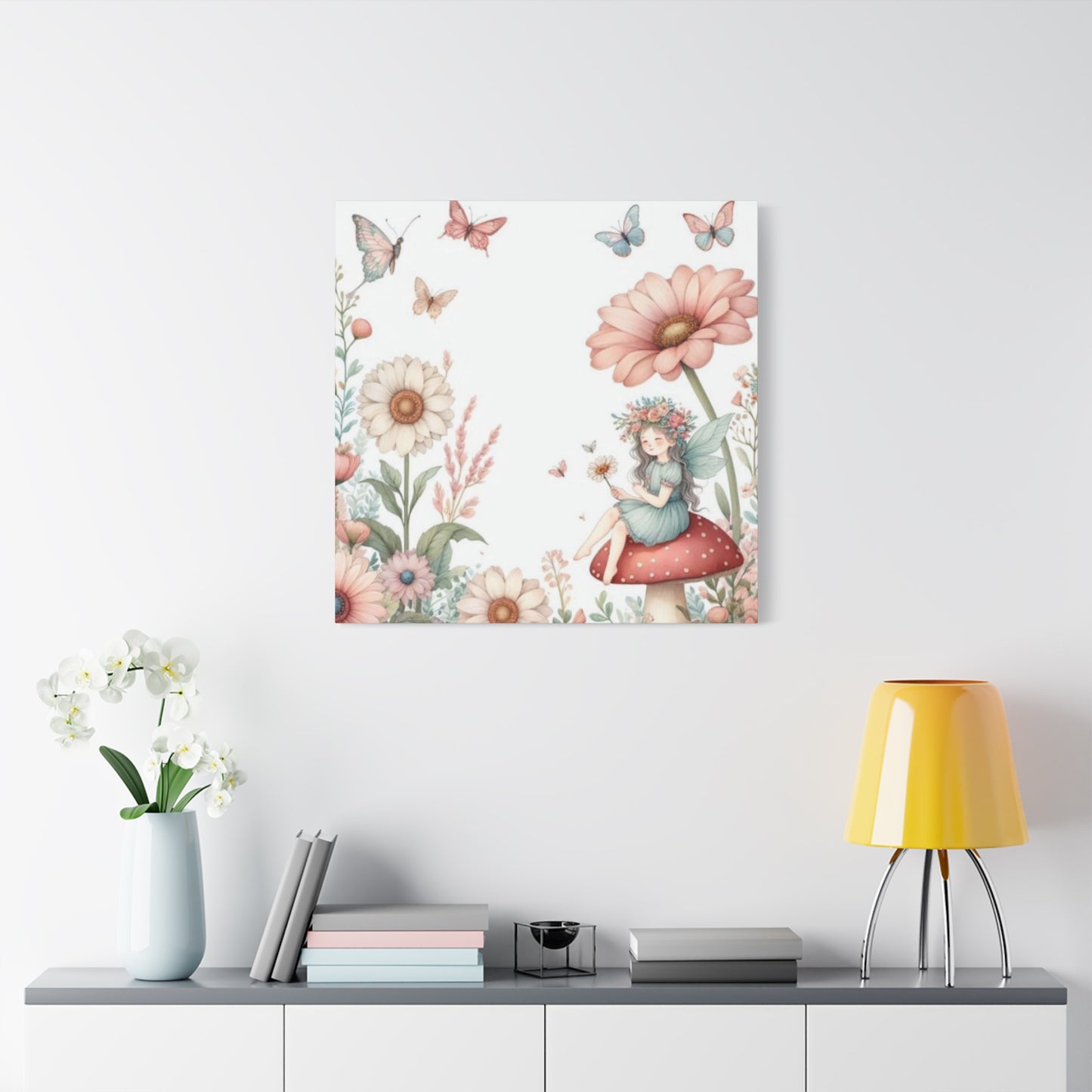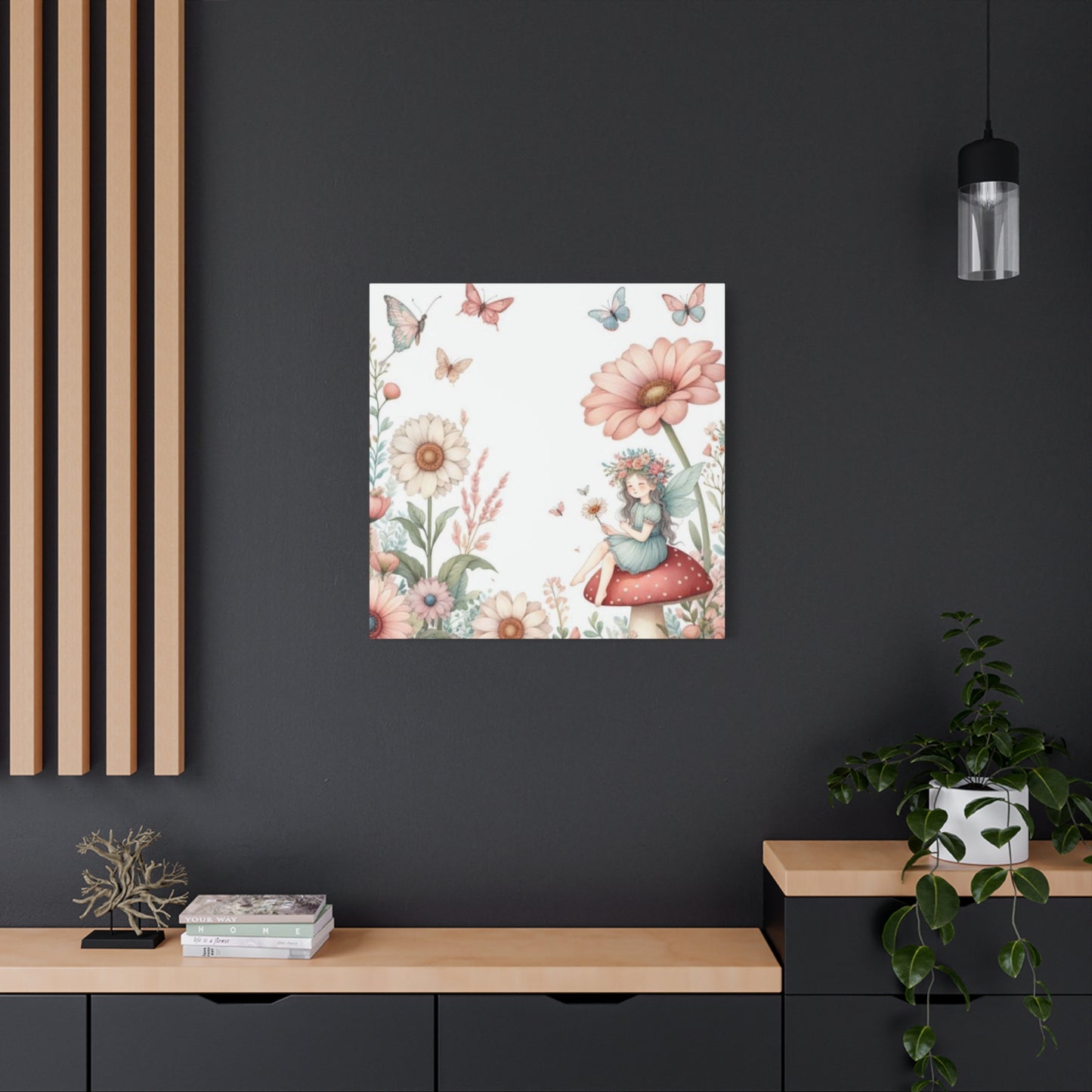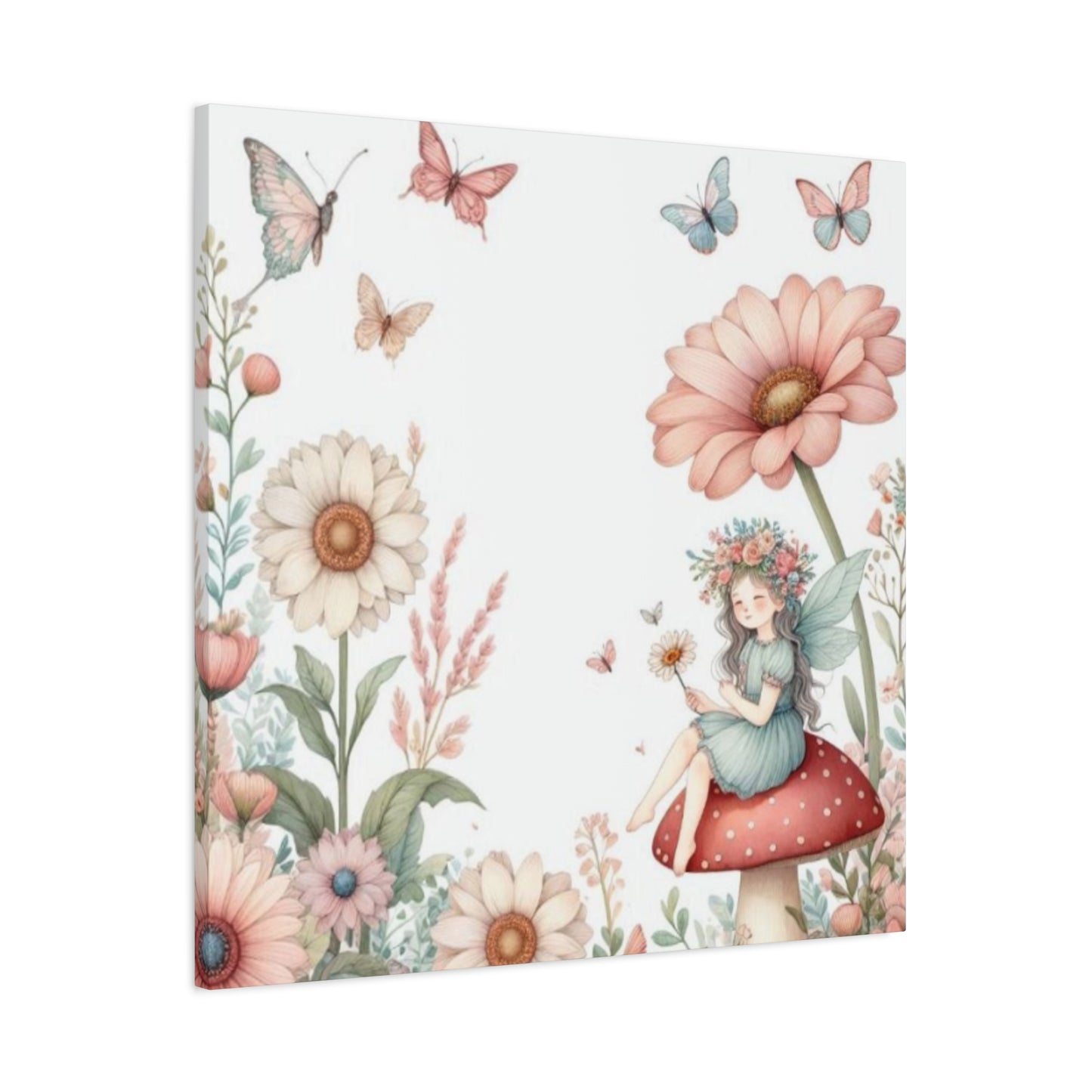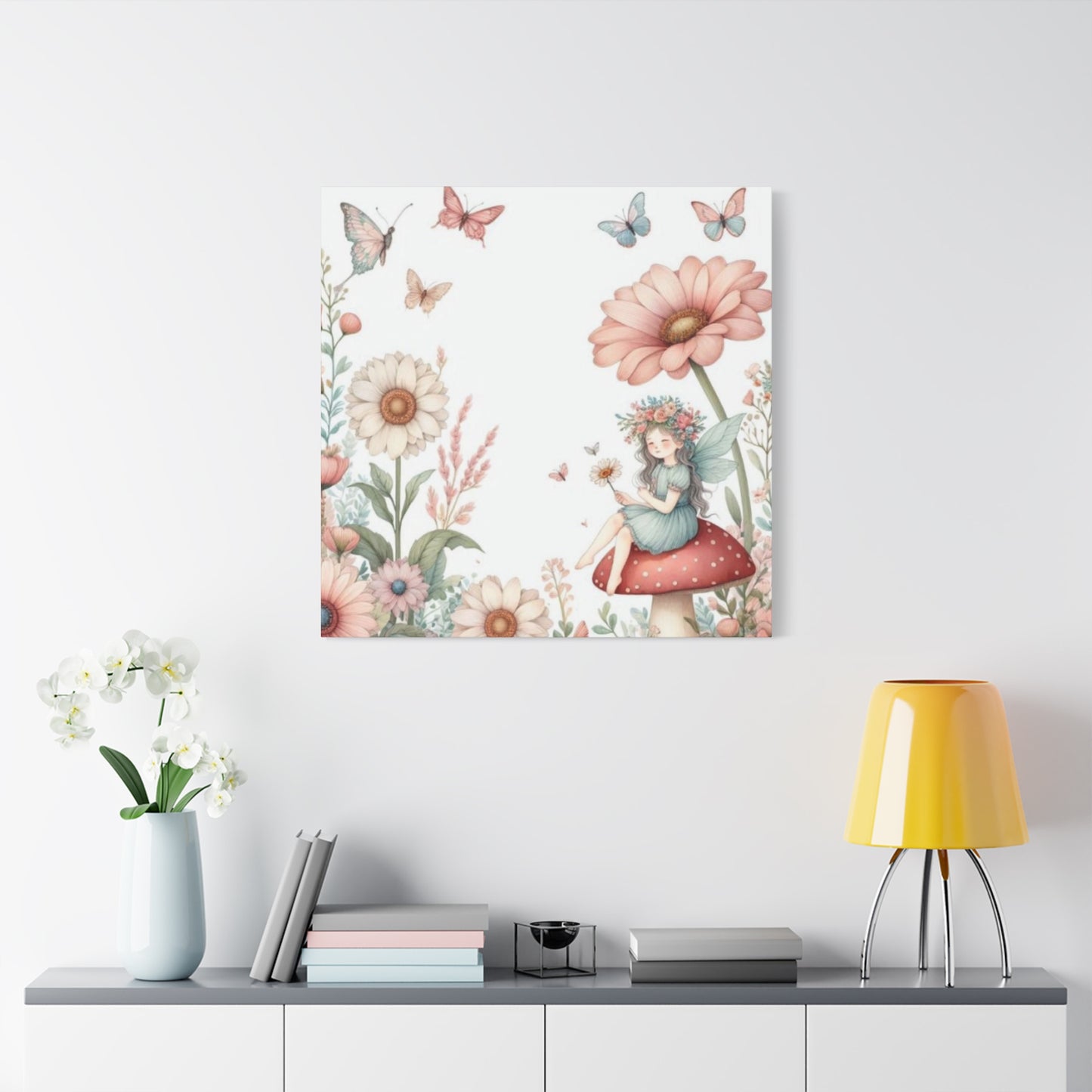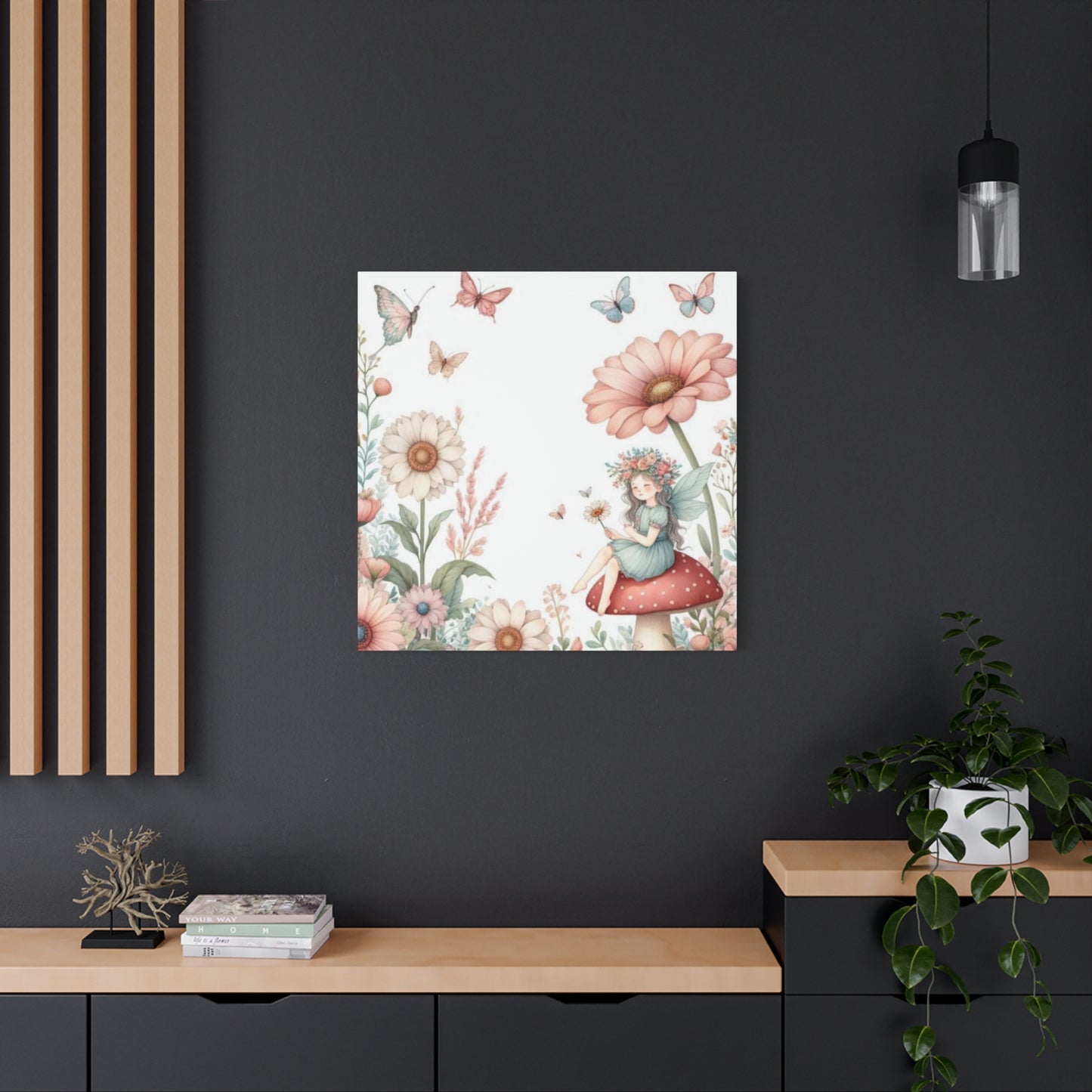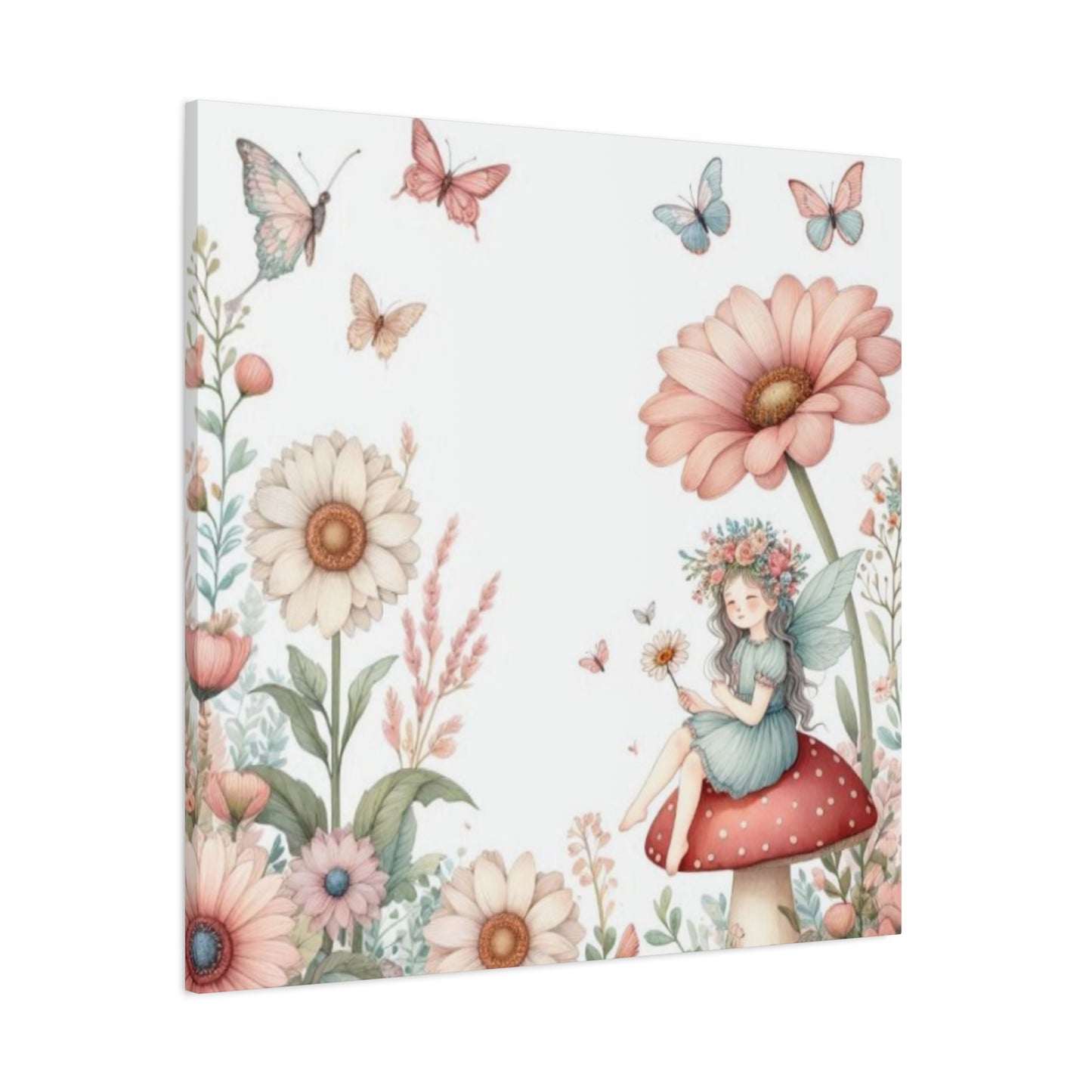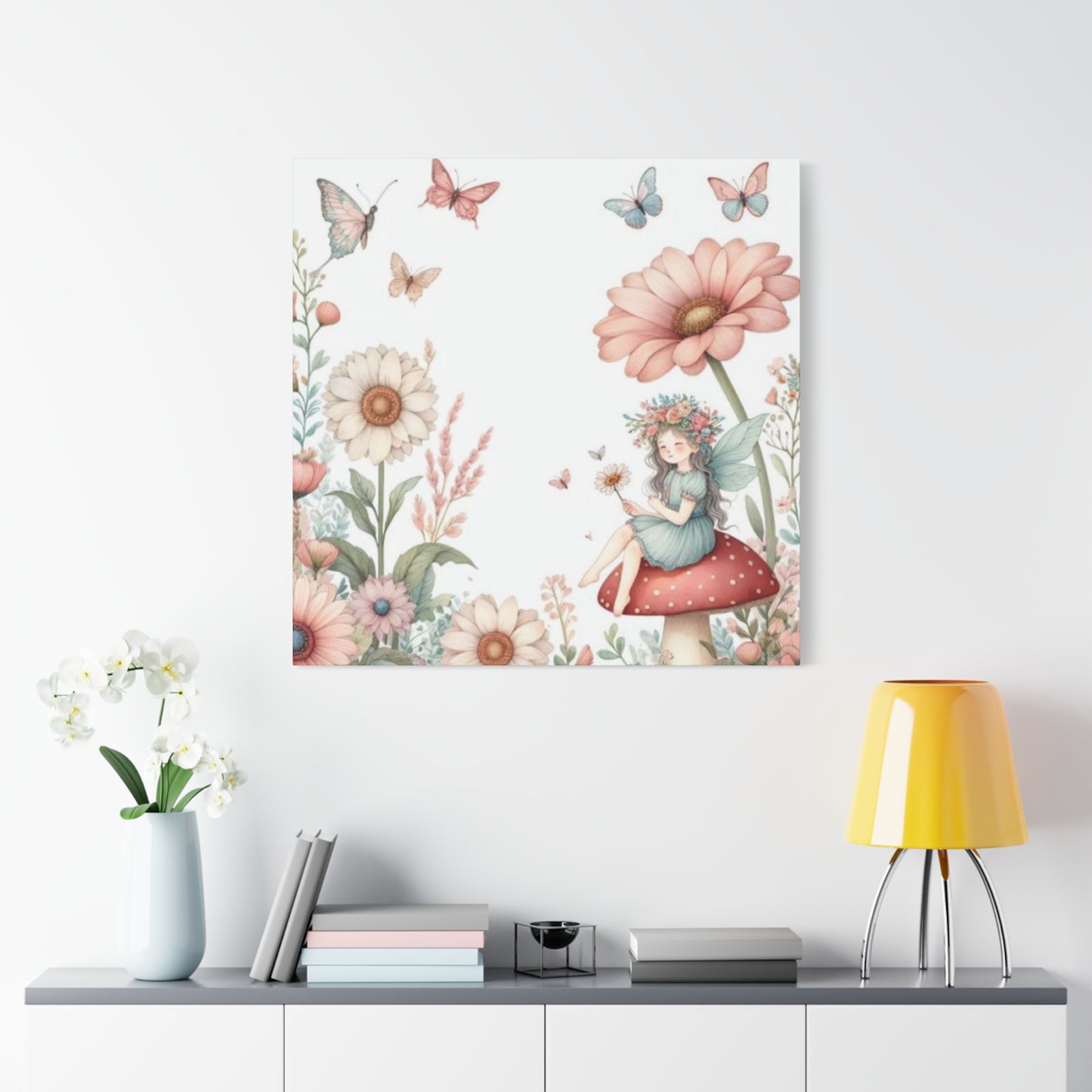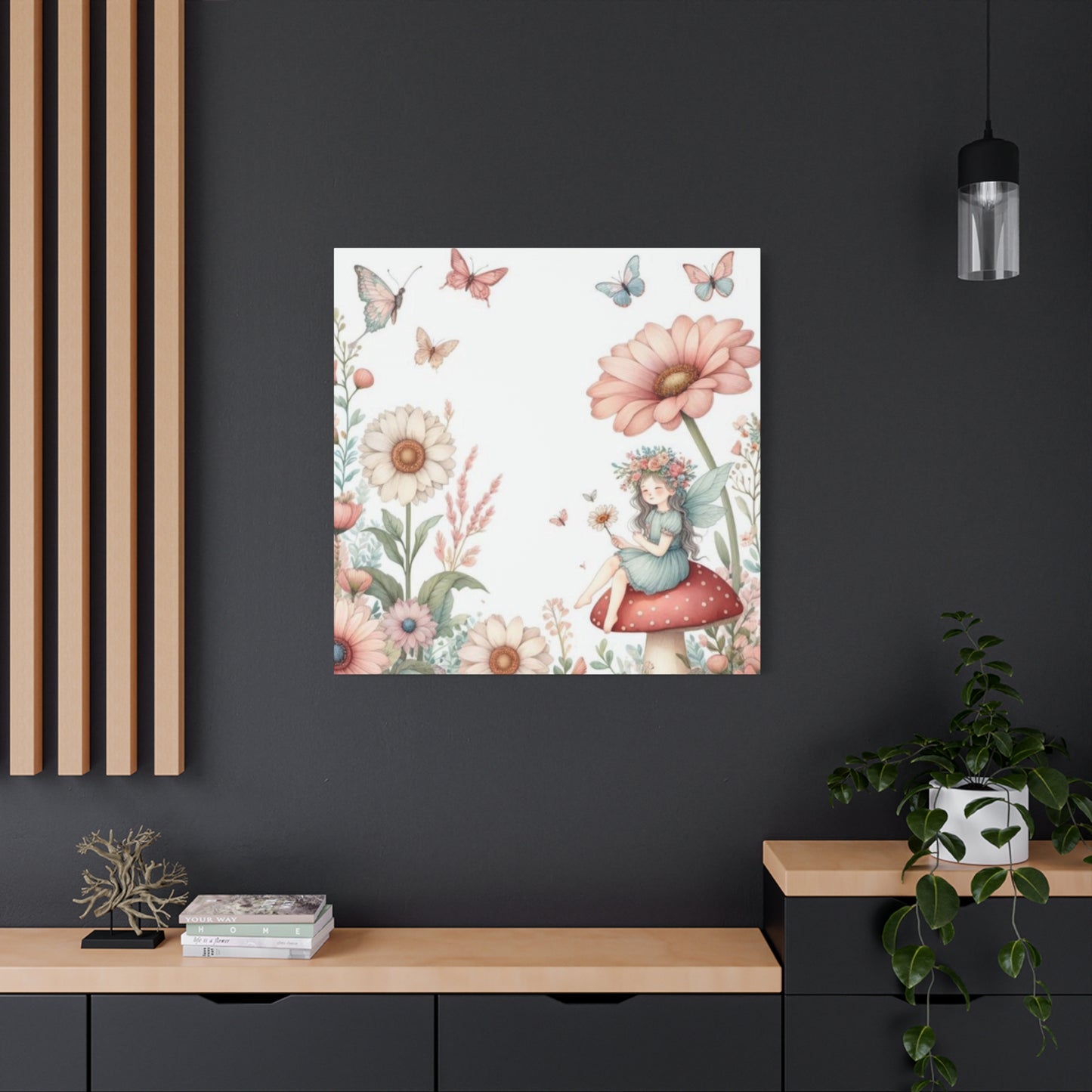Mushroom Fairies Wall Art Canvas Prints: Transform Your Home with Magical Woodland Fantasy Art
Mushroom fairies wall art canvas prints have emerged as one of the most enchanting decorative trends, bringing whimsical woodland magic directly into modern homes. These captivating artworks combine the mystical allure of fairy folklore with the earthy charm of forest mushrooms, creating visual narratives that transport viewers to ethereal realms filled with wonder and imagination. The popularity of mushroom fairy canvas prints stems from their ability to evoke childhood memories while appealing to sophisticated aesthetic sensibilities.
The artistic representation of mushrooms paired with fairy imagery draws upon centuries of folklore and mythology, where these magical beings were believed to inhabit forest floors among toadstools and fungi. Contemporary artists have reimagined these classic tales through vibrant canvas prints that capture the delicate beauty of fairy wings alongside the organic textures of mushroom caps and stems. These artworks often feature intricate details that reward close examination, from gossamer wings catching dappled sunlight to tiny fairy dwellings nestled beneath mushroom umbrellas.
Modern mushroom fairy canvas prints utilize advanced printing technologies to achieve stunning color reproduction and fine detail resolution. High-quality canvas materials ensure longevity and resist fading, while professional-grade inks maintain their vibrancy for years. The textural quality of canvas adds depth and dimension to these fantasy scenes, creating an almost three-dimensional effect that draws viewers into the magical world depicted within each frame.
The versatility of mushroom fairy wall art makes it suitable for various room types and decorating styles. Whether displayed in children's bedrooms, creative studios, living rooms, or reading nooks, these prints add an element of whimsy and wonder that sparks imagination and conversation. The natural color palettes typically found in mushroom fairy art complement both neutral and bold decorating schemes, making integration into existing decor seamless and harmonious.
Collectors and art enthusiasts appreciate the diverse range of artistic styles available in mushroom fairy canvas prints. From photorealistic digital paintings to watercolor-inspired illustrations, abstract interpretations to vintage-style botanical studies, there exists a mushroom fairy artwork to suit every taste and preference. This variety ensures that each collector can find pieces that resonate with their personal aesthetic vision while contributing to the overall ambiance of their living environment.
Historical Origins and Cultural Significance of Fairy Mushroom Art
The connection between fairies and mushrooms traces back to ancient European folklore, where fairy rings of mushrooms were considered magical portals or dancing grounds for these ethereal beings. Historical accounts from medieval times describe mysterious circular arrangements of mushrooms appearing overnight in meadows and forests, leading communities to believe that fairies had gathered there for nocturnal celebrations. These natural phenomena became deeply embedded in cultural consciousness, influencing art, literature, and storytelling traditions that continue to inspire contemporary mushroom fairy canvas prints.
Celtic mythology particularly embraced the relationship between fairies and fungi, with druids considering certain mushroom species sacred and attributing supernatural properties to their growth patterns. Ancient Celtic artwork often depicted fairy folk living in harmony with forest elements, including various mushroom species that served as homes, furniture, and even transportation for these diminutive magical beings. These historical artistic traditions provided foundational imagery that modern canvas artists draw upon when creating contemporary mushroom fairy prints.
Victorian era fascination with fairy lore reached unprecedented heights, coinciding with advances in botanical illustration and nature study. Victorian artists began creating detailed depictions of fairy life among mushrooms, combining scientific accuracy in fungi representation with imaginative fairy characterizations. This period established many visual conventions still used in modern mushroom fairy canvas art, including the portrayal of mushrooms as fairy dwellings, the use of natural color palettes, and the emphasis on intricate detail work.
The Arts and Crafts movement of the late 19th and early 20th centuries further elevated fairy and mushroom imagery, with artists like Arthur Rackham and Edmund Dulac creating iconic illustrations that influenced generations of subsequent artists. Their work demonstrated how mushroom fairy themes could be both whimsical and sophisticated, appealing to adult sensibilities while maintaining childlike wonder. These artistic precedents continue to inform contemporary canvas print designs, ensuring visual continuity with historical artistic traditions.
Folk art traditions from various cultures contribute unique perspectives to mushroom fairy imagery. Scandinavian folklore introduces concepts of forest spirits dwelling among mushrooms, while Asian artistic traditions bring different aesthetic approaches to depicting the harmony between magical beings and natural elements. This cultural diversity enriches the contemporary mushroom fairy canvas print market, offering collectors access to artworks that reflect global interpretations of these timeless themes.
Modern psychological understanding of archetypal imagery explains the enduring appeal of mushroom fairy art. These images tap into universal human connections with nature, representing desires for escape from urban environments and reconnection with natural cycles. The mushroom fairy motif combines feminine creative energy with earthy grounding, creating visual symbols that resonate across cultural and generational boundaries. This psychological dimension adds depth to mushroom fairy canvas prints, making them more than mere decorative objects but rather meaningful artistic statements.
Artistic Styles and Techniques in Mushroom Fairy Canvas Prints
Contemporary mushroom fairy canvas prints showcase an impressive range of artistic styles, each bringing unique interpretations to this beloved theme. Photorealistic digital paintings represent one popular approach, utilizing advanced digital tools to create incredibly detailed scenes where every mushroom gill and fairy wing appears tangible and three-dimensional. These artworks often feature complex lighting effects, atmospheric perspective, and minute textural details that create immersive viewing experiences rivaling traditional oil paintings.
Watercolor-inspired mushroom fairy prints capture the ethereal, dreamlike qualities associated with fairy folklore through soft color transitions and delicate brushwork effects. Digital artists recreate traditional watercolor techniques using specialized software, achieving the characteristic bleeding edges and translucent color layers that define this medium. The resulting canvas prints maintain the spontaneous, magical feeling of watercolor while benefiting from digital precision and reproducibility.
Abstract interpretations of mushroom fairy themes push creative boundaries by focusing on color, form, and emotional expression rather than literal representation. These artworks might feature stylized mushroom silhouettes surrounded by swirling fairy energy represented through dynamic color gradients and geometric patterns. Abstract mushroom fairy canvas prints appeal to modern aesthetic sensibilities while maintaining thematic connections to traditional fairy imagery.
Botanical illustration style mushroom fairy prints combine scientific accuracy with whimsical fairy elements, creating educational yet enchanting artworks. These pieces often feature detailed mushroom anatomy alongside carefully observed fairy characteristics, resulting in prints that satisfy both artistic and scientific interests. The precision required for botanical accuracy translates into canvas prints with exceptional detail and educational value.
Vintage-inspired mushroom fairy art draws upon historical illustration techniques and color palettes to create prints that feel timeless and nostalgic. Artists working in this style often incorporate aged paper textures, muted color schemes, and classical composition techniques that evoke antique botanical prints or vintage children's book illustrations. These canvas prints appeal to collectors who appreciate historical artistic traditions and classic aesthetic approaches.
Mixed media approaches combine multiple artistic techniques within single mushroom fairy canvas prints, creating layered visual experiences that reward detailed examination. Artists might combine photographic mushroom imagery with hand-drawn fairy elements, or layer digital painting over textural backgrounds created through traditional techniques. These innovative approaches result in unique canvas prints that stand out in any art collection.
Minimalist mushroom fairy designs focus on essential elements while eliminating unnecessary details, creating clean, modern interpretations of traditional themes. These prints might feature simplified mushroom and fairy silhouettes against neutral backgrounds, using negative space and subtle color variations to create visual impact. Minimalist approaches appeal to contemporary decorating sensibilities while maintaining thematic integrity.
Color Psychology and Mushroom Fairy Art
The color choices in mushroom fairy canvas prints significantly impact their emotional effect and decorative potential. Understanding color psychology helps both artists and collectors make informed decisions about which prints will best serve their intended purposes and environments. Warm color palettes dominated by reds, oranges, and yellows create energizing, cheerful mushroom fairy scenes that work well in social areas and children's rooms. These colors evoke feelings of happiness, creativity, and warmth, making viewers feel welcome and inspired.
Cool color schemes featuring blues, purples, and greens produce calming, meditative mushroom fairy artworks perfect for bedrooms, study areas, and relaxation zones. These colors promote tranquility, concentration, and emotional balance, creating environments conducive to rest and reflection. Cool-toned mushroom fairy canvas prints often incorporate moonlight scenarios or deep forest settings that enhance their peaceful qualities.
Earth tones including browns, ochres, and muted greens connect mushroom fairy art directly to natural environments, creating grounding effects that bring outdoor energy indoors. These colors appeal to viewers seeking nature connection and environmental harmony. Earth-toned mushroom fairy prints work particularly well in rustic, bohemian, or nature-inspired decorating schemes where natural materials and organic forms predominate.
Jewel tones such as emerald, sapphire, and amethyst add luxury and sophistication to mushroom fairy canvas prints while maintaining their magical appeal. These rich, saturated colors create dramatic focal points and work well in formal settings or rooms where bold artistic statements are desired. Jewel-toned mushroom fairy art bridges the gap between whimsical children's art and sophisticated adult decor.
Monochromatic color schemes using various shades of single colors create unified, elegant mushroom fairy prints that integrate easily into existing color schemes. These artworks demonstrate how color restriction can enhance rather than limit artistic expression, with subtle tonal variations creating depth and interest without overwhelming viewers or competing with surrounding decor elements.
Complementary color combinations utilizing colors opposite each other on the color wheel create dynamic, eye-catching mushroom fairy canvas prints that command attention. Popular combinations include purple mushrooms with yellow fairy light, or orange fungi with blue atmospheric effects. These high-contrast approaches work well as statement pieces in rooms where bold artistic impact is desired.
Analogous color schemes using adjacent colors on the color wheel produce harmonious, pleasing mushroom fairy artworks that feel naturally balanced and soothing. These prints often feature subtle color transitions that mirror natural color progressions found in forest environments, creating believable and immersive fairy worlds that feel authentic and inviting.
Choosing the Perfect Mushroom Fairy Canvas Print for Your Home
Selecting the ideal mushroom fairy canvas print requires careful consideration of multiple factors including room function, existing decor, size requirements, and personal preferences. Understanding how these elements interact helps ensure that chosen artworks enhance rather than clash with their intended environments. Room function plays a crucial role in determining appropriate mushroom fairy print characteristics, as different activities and moods benefit from different artistic approaches and color schemes.
Living rooms and common areas benefit from larger, more dramatic mushroom fairy canvas prints that can serve as conversation starters and focal points. These prints should complement existing furniture and color schemes while adding personality and visual interest to the room. Consider the room's natural lighting when selecting prints, as this affects how colors appear and how details are perceived throughout the day.
Bedrooms require mushroom fairy canvas prints that promote relaxation and peaceful sleep, making color choice particularly important. Soft, muted colors and gentle imagery work better than bright, stimulating designs that might interfere with rest. Personal taste becomes paramount in bedroom selections, as these private areas should reflect individual preferences and create personally meaningful environments.
Children's rooms offer opportunities for more playful, colorful mushroom fairy prints that stimulate imagination and creativity. Safety considerations become important when selecting canvas prints for young children's rooms, ensuring that mounting hardware is secure and that print content is age-appropriate. Educational elements in mushroom fairy art can support learning about nature and folklore while providing decorative beauty.
Home offices and study areas benefit from mushroom fairy canvas prints that inspire creativity without causing distraction. Balanced compositions with interesting details that reward occasional contemplation work well in these environments. Color choices should support concentration and productivity while adding visual relief from work-related stress.
Kitchen and dining areas can accommodate mushroom fairy prints that incorporate food themes or harvest imagery, creating connections between fairy folklore and culinary activities. Moisture-resistant canvas treatments become important in these environments to ensure longevity and maintain appearance over time.
Bathroom installations of mushroom fairy canvas prints require special attention to humidity resistance and water protection. Sealed canvas prints or protective glazing may be necessary to prevent moisture damage while maintaining the aesthetic appeal of fairy artwork in these intimate settings.
Size considerations affect both visual impact and practical installation requirements. Large mushroom fairy canvas prints create dramatic statements but require adequate wall area and appropriate viewing distances. Small prints work well in groupings or intimate settings but may lack impact in large rooms. Medium-sized prints offer versatility and work in most environments while providing sufficient detail appreciation.
Installation and Placement Techniques for Maximum Impact
Proper installation and strategic placement of mushroom fairy canvas prints significantly enhance their visual impact and ensure their longevity. Understanding basic hanging principles and advanced placement techniques helps collectors create professional-looking displays that showcase their fairy art to best advantage. Wall preparation forms the foundation of successful canvas print installation, requiring attention to surface condition, structural integrity, and environmental factors that might affect the artwork over time.
Height placement follows established art hanging guidelines, with print centers typically positioned at eye level for average viewers. However, mushroom fairy prints often benefit from slight variations in this standard, particularly when depicting ground-level fairy scenes that feel more natural when hung slightly lower. Consider the primary viewing positions when determining optimal height, accounting for whether viewers will typically be standing, sitting, or passing by the artwork.
Lighting considerations dramatically affect how mushroom fairy canvas prints appear and how well their details can be appreciated. Natural lighting provides the most accurate color representation but can cause fading over time if direct sunlight strikes the prints. Artificial lighting should be positioned to minimize glare while providing adequate illumination for detail appreciation. LED spotlights or picture lights can create dramatic effects while protecting the artwork from heat damage associated with traditional incandescent bulbs.
Grouping multiple mushroom fairy canvas prints requires attention to visual balance, thematic coherence, and compositional flow. Gallery wall arrangements work well for collections of related prints, creating immersive fairy environments that transport viewers into magical woodland realms. Spacing between prints should allow each piece to be appreciated individually while contributing to the overall group dynamic.
Corner placements can create intimate fairy sanctuaries, particularly when mushroom fairy prints are positioned to take advantage of natural corner lighting or architectural features. These installations often feel more private and contemplative, encouraging closer examination and personal connection with the fairy imagery.
Above furniture placements require coordination between print dimensions and furniture scale to achieve visual harmony. Mushroom fairy canvas prints above beds, sofas, or tables should relate proportionally to the furniture below while maintaining appropriate clearance for safety and functionality. Consider how furniture arrangement affects viewing angles and adjust print placement accordingly.
Hallway installations of mushroom fairy prints can transform transitional areas into magical passages, creating narrative sequences as viewers move through the home. These installations require attention to traffic flow and lighting to ensure safe passage while maximizing artistic impact. Series of related prints can tell fairy stories that unfold as viewers progress through the hallway.
Stairway placements present unique opportunities and challenges for mushroom fairy canvas print display. The changing viewpoints as people ascend or descend stairs allow for dynamic compositions that reveal different aspects of the fairy imagery from various angles. However, installation must account for safety requirements and structural limitations specific to stairway environments.
Caring for and Maintaining Mushroom Fairy Canvas Prints
Proper care and maintenance ensure that mushroom fairy canvas prints retain their beauty and value over many years of display and enjoyment. Understanding the specific needs of canvas prints helps prevent damage and deterioration while maintaining optimal appearance. Regular cleaning routines remove dust and environmental contaminants that can accumulate on canvas surfaces and affect image clarity and color vibrancy.
Dusting should be performed regularly using soft, dry brushes or microfiber cloths that won't scratch or damage the canvas surface. Gentle, light strokes following the weave pattern of the canvas prevent damage to the printed image while effectively removing surface dust and debris. Avoid using household cleaners, water, or chemical products that might interact with canvas materials or printing inks.
Environmental control plays a crucial role in preserving mushroom fairy canvas prints over time. Stable temperature and humidity levels prevent canvas expansion and contraction that can cause cracking or warping. Ideal conditions maintain temperatures between 65-75 degrees Fahrenheit with relative humidity between 45-55 percent. Avoid placing canvas prints near heat sources, air conditioning vents, or areas with high humidity fluctuations.
Light exposure management protects mushroom fairy prints from fading and color degradation over time. While these artworks are designed for display and viewing, limiting exposure to direct sunlight and using UV-filtering window treatments help preserve color integrity. Rotating displayed prints periodically allows even light exposure and prevents uneven fading that can affect image quality.
Handling procedures become important when moving or storing mushroom fairy canvas prints. Always handle prints by their frames or edges, avoiding contact with the printed surface that could leave oils, moisture, or other contaminants. Use clean, dry hands or cotton gloves when handling valuable or delicate prints to prevent transfer of skin oils or other materials.
Storage requirements for mushroom fairy canvas prints not currently displayed should protect them from physical damage, environmental extremes, and pest intrusion. Flat storage in acid-free containers prevents bending or creasing, while vertical storage in protective sleeves works for prints with sturdy backing. Climate-controlled storage areas prevent temperature and humidity fluctuations that could damage canvas materials over time.
Professional conservation may become necessary for valuable or damaged mushroom fairy canvas prints. Qualified art conservators can address issues such as canvas tears, color fading, or structural damage using specialized techniques and materials. Regular professional assessment helps identify potential problems before they become serious conservation challenges.
Framing considerations affect both the appearance and preservation of mushroom fairy canvas prints. Quality frames protect edges and provide structural support while enhancing the overall presentation. UV-filtering glazing adds protection from light damage while maintaining visibility and color accuracy. Acid-free matting materials prevent chemical interactions that could cause discoloration or degradation over time.
The Digital Art Revolution in Mushroom Fairy Imagery
The evolution of digital art technology has revolutionized how mushroom fairy imagery is created, produced, and distributed, making high-quality fantasy art accessible to broader audiences than ever before. Digital tools allow artists to achieve levels of detail, color accuracy, and creative effects that would be extremely difficult or impossible using traditional media alone. This technological advancement has democratized fairy art creation while maintaining the magical essence that makes mushroom fairy imagery so appealing.
Digital painting software provides artists with infinite color palettes, erasable mistakes, and layered composition capabilities that streamline the creative process. Artists can experiment with multiple versions of fairy characters, mushroom arrangements, and atmospheric effects without committing to permanent marks on physical media. This flexibility encourages creative exploration and allows for more refined final compositions in mushroom fairy canvas prints.
3D modeling and rendering techniques enable artists to create photorealistic mushroom environments populated with fairy characters that appear to have real depth and dimension. These technologies allow for accurate lighting simulation, realistic texture mapping, and complex atmospheric effects that enhance the believability of fantasy scenes. The resulting mushroom fairy canvas prints can achieve levels of realism that blur the line between photography and illustration.
Digital photography integration with digital painting allows artists to combine real mushroom imagery with painted fairy elements, creating hybrid artworks that benefit from both photographic accuracy and artistic interpretation. This approach grounds fantasy elements in recognizable natural settings while maintaining creative freedom in fairy characterization and magical effects.
Animation and motion graphics technologies, while not directly applicable to static canvas prints, inform the creation of dynamic compositions that suggest movement and life within still images. Artists trained in animation bring understanding of motion, timing, and character expression that enhances the narrative quality of mushroom fairy static artwork.
Print technology advances ensure that digital mushroom fairy artwork translates accurately to canvas media without loss of detail or color fidelity. High-resolution digital files maintain quality through the printing process, while advanced ink formulations provide longevity and fade resistance comparable to traditional art media. These technological improvements guarantee that digital mushroom fairy art can achieve archival quality suitable for serious collecting and long-term display.
Online distribution platforms connect mushroom fairy artists directly with collectors and decorators worldwide, eliminating traditional gatekeepers and allowing for more diverse artistic voices to reach audiences. Digital marketplaces enable artists to offer their work as both limited edition prints and customizable options, providing flexibility for both artists and buyers in the mushroom fairy art market.
Artificial intelligence and machine learning tools are beginning to influence mushroom fairy art creation, offering artists new ways to generate ideas, refine compositions, and create variations on successful themes. While these technologies supplement rather than replace human creativity, they provide powerful tools for exploring new possibilities in fairy imagery and mushroom representation.
Psychological Benefits of Mushroom Fairy Art in Living Environments
The presence of mushroom fairy canvas prints in living environments provides numerous psychological benefits that contribute to overall well-being and quality of life. Understanding these benefits helps explain the enduring popularity of fairy artwork while providing additional justification for incorporating these magical images into home decoration schemes. The psychological impact of art extends beyond mere aesthetic appreciation to encompass emotional regulation, stress reduction, and creative inspiration.
Stress reduction represents one of the most significant benefits of mushroom fairy artwork in home environments. The natural imagery, soft colors, and whimsical subject matter characteristic of fairy art activate the parasympathetic nervous system, promoting relaxation and reducing cortisol levels associated with chronic stress. Viewing mushroom fairy scenes provides mental escape from daily pressures and urban environments, offering brief respites that refresh and restore emotional balance.
Creativity stimulation occurs naturally when viewing imaginative mushroom fairy imagery that depicts impossible worlds and magical beings. These artworks encourage viewers to engage their own imaginative faculties, potentially enhancing creative problem-solving abilities and artistic expression in other areas of life. The fantastical nature of fairy art challenges conventional thinking patterns and opens minds to alternative possibilities and innovative solutions.
Childhood connection and nostalgia evoked by mushroom fairy prints provide psychological anchoring to earlier life periods often associated with wonder, security, and unlimited possibility. These emotional connections can enhance feelings of continuity and identity while providing comfort during challenging life transitions. The preservation of childlike wonder through fairy art contributes to psychological resilience and emotional flexibility throughout adulthood.
Nature connection facilitated by mushroom imagery addresses the human need for environmental contact, particularly important for urban dwellers with limited access to natural settings. Mushroom fairy art brings forest energy indoors, satisfying biophilic needs and promoting the psychological benefits associated with nature exposure. This connection supports overall mental health and environmental awareness.
Mood enhancement through color and imagery in mushroom fairy prints affects neurotransmitter production and emotional regulation. Positive imagery and pleasing color combinations stimulate endorphin release and promote feelings of happiness and contentment. The magical themes in fairy art encourage optimism and hope, contributing to positive mental outlook and emotional well-being.
Social conversation facilitation provided by interesting mushroom fairy artwork enhances interpersonal connections and relationship building. Unique art pieces serve as conversation starters, helping to break social barriers and create shared experiences. The universal appeal of fairy themes provides common ground for people of different backgrounds and ages to connect over shared aesthetic appreciation.
Meditation and mindfulness support offered by contemplative mushroom fairy imagery provides focus points for reflective practices. The detailed nature of quality fairy art rewards close examination and encourages present-moment awareness. These meditative qualities support stress management and emotional regulation while providing alternatives to technology-based entertainment and distraction.
Cultural Variations in Mushroom Fairy Art Traditions
Mushroom fairy art draws from diverse cultural traditions worldwide, each contributing unique perspectives and artistic approaches to this universal theme. Understanding these cultural variations enriches appreciation for mushroom fairy canvas prints while highlighting the global appeal of fairy folklore and fungi symbolism. European traditions form the foundation for most contemporary mushroom fairy art, but influences from other cultures add depth and diversity to modern interpretations.
Celtic traditions emphasize the sacred nature of mushroom rings and their connection to otherworldly realms. Celtic mushroom fairy art often features intricate knotwork patterns, earth-based color palettes, and strong connections to seasonal cycles and natural magic. These influences appear in contemporary canvas prints through decorative border elements, symbol incorporation, and emphasis on harmony between fairy beings and natural environments.
Germanic and Scandinavian folklore contributes concepts of forest spirits and woodland creatures that inhabit mushroom dwellings. These traditions emphasize the practical aspects of fairy life, depicting mushrooms as functional fairy architecture rather than merely decorative elements. Nordic influences appear in mushroom fairy canvas prints through architectural details, seasonal themes, and integration of traditional textile patterns and woodworking motifs.
Slavic traditions bring concepts of mushroom spirits and forest guardians that protect woodland realms from harmful influences. These protective aspects of mushroom fairy lore influence contemporary art through imagery of guardian fairies, magical mushroom barriers, and healing fairy medicine practices. Slavic artistic influences include bright color palettes, folk art decorative elements, and emphasis on community and cooperation among fairy beings.
Asian interpretations of mushroom fairy themes draw from different philosophical and artistic traditions that emphasize balance, harmony, and spiritual development. Japanese concepts of forest spirits and Chinese ideas about mushroom immortality contribute to canvas prints featuring more meditative, contemplative fairy imagery. Asian artistic influences include minimalist compositions, natural color palettes, and emphasis on seasonal beauty and impermanence.
North American indigenous traditions contribute understanding of mushroom spiritual significance and connection to earth wisdom. These influences appear in contemporary mushroom fairy art through earth-based symbolism, natural material incorporation, and emphasis on ecological harmony and environmental protection. Native American artistic influences include geometric pattern elements, natural color palettes derived from earth pigments, and spiritual symbolism related to nature connection.
African traditions bring concepts of earth spirits and ancestral wisdom that inhabit natural features including mushrooms and trees. These influences contribute to mushroom fairy canvas prints through spiritual symbolism, community-oriented fairy imagery, and vibrant color palettes inspired by African textile traditions. The emphasis on ancestral wisdom and earth connection adds depth to contemporary fairy art interpretations.
Latin American folklore contributes concepts of nature spirits and magical beings that inhabit forest environments. These traditions influence mushroom fairy art through bright color palettes, celebration themes, and emphasis on music and dance in fairy culture. Latin American artistic influences include decorative pattern elements, festive imagery, and integration of tropical plant and animal motifs with traditional mushroom fairy themes.
Contemporary global fusion approaches combine elements from multiple cultural traditions to create unique mushroom fairy art that reflects modern multicultural perspectives. These fusion approaches result in canvas prints that incorporate diverse artistic techniques, cultural symbols, and philosophical approaches while maintaining coherent artistic vision and thematic integrity.
The Science Behind Mushroom Imagery in Art
Understanding the scientific aspects of mushroom biology and ecology enhances appreciation for mushroom fairy canvas prints while providing educational value that extends beyond mere aesthetic enjoyment. Mushroom representation in art requires knowledge of fungal structure, life cycles, and ecological relationships to achieve accuracy and believability. Scientific accuracy in mushroom depiction lends credibility to fantasy elements while educating viewers about these fascinating organisms.
Mushroom anatomy provides the structural foundation for artistic representation, with detailed knowledge of caps, stems, gills, and spores enabling artists to create believable mushroom imagery. Understanding how these structures vary among different mushroom species allows for artistic diversity while maintaining biological accuracy. The intricate details of mushroom anatomy reward close examination and provide endless inspiration for artistic interpretation.
Mushroom life cycles and reproduction methods inform artistic choices about how mushrooms are depicted in various growth stages and environmental conditions. Understanding spore dispersal, mycelial networks, and seasonal growth patterns adds scientific accuracy to fantasy scenarios while providing narrative possibilities for fairy interactions with mushroom ecosystems. This knowledge enables artists to create more sophisticated and educationally valuable mushroom fairy artwork.
Ecological relationships between mushrooms and forest environments provide context for realistic fairy habitat depiction. Understanding symbiotic relationships between fungi and plants, nutrient cycling roles, and environmental requirements allows artists to create believable forest scenes where fairies and mushrooms coexist naturally. This ecological accuracy enhances the credibility of fantasy elements while promoting environmental awareness.
Mushroom diversity and species identification knowledge enables artists to incorporate accurate representations of various mushroom types in fairy artwork. Different species offer unique visual characteristics, colors, and forms that add variety and interest to mushroom fairy canvas prints. Scientific accuracy in species representation demonstrates artistic commitment to quality and educational value.
Chemical and nutritional properties of mushrooms inform artistic choices about which species to include in edible fairy feast scenes or magical potion brewing imagery. Understanding which mushrooms are safe, toxic, or psychoactive adds narrative depth to fairy artwork while promoting safety awareness. This knowledge allows artists to make informed choices about mushroom species representation in various fairy life scenarios.
Environmental factors affecting mushroom growth and appearance provide realistic context for fairy habitat depiction. Understanding moisture requirements, temperature preferences, and seasonal timing allows artists to create believable scenes where environmental conditions support both mushroom growth and fairy habitation. This attention to environmental detail enhances the overall credibility and educational value of mushroom fairy artwork.
Conservation and ecological protection themes in mushroom fairy art can promote environmental awareness and habitat preservation. Understanding threats to mushroom ecosystems and forest environments allows artists to incorporate subtle educational messages about conservation importance while maintaining the magical appeal of fairy imagery. These educational elements add depth and social relevance to decorative artwork.
Seasonal Themes in Mushroom Fairy Canvas Art
Seasonal variations in mushroom fairy canvas prints provide opportunities for rotating displays that reflect natural cycles and maintain visual interest throughout the year. Understanding how different seasons affect both mushroom growth and fairy activities allows for sophisticated seasonal decorating approaches that connect indoor environments with outdoor natural rhythms. Seasonal themes also provide collectors with justification for acquiring multiple mushroom fairy prints that collectively represent the complete annual cycle.
Spring mushroom fairy themes celebrate renewal, growth, and emergence from winter dormancy. These prints often feature young mushrooms emerging from forest floors alongside fairy characters engaged in spring cleaning, garden preparation, or celebration of returning life. Pastel color palettes, fresh green foliage, and blooming wildflowers characterize spring mushroom fairy artwork, creating optimistic and energizing visual experiences perfect for spring decorating schemes.
Summer mushroom fairy scenes depict the peak of forest abundance when mushrooms reach full development and fairy activities center around harvest festivals, outdoor celebrations, and community gatherings. Rich, saturated colors dominate summer fairy artwork, with lush forest backgrounds and abundant mushroom displays creating scenes of plenty and celebration. These prints work well in areas where summer entertaining occurs or where energetic, social atmospheres are desired.
Autumn mushroom fairy themes focus on harvest time, preparation for winter, and the spectacular color displays associated with fall foliage. These prints often feature fairy characters gathering mushrooms for winter storage, preparing fairy dwellings for cold weather, or celebrating harvest festivals with abundant food displays. Warm color palettes dominated by oranges, reds, and gold create cozy, inviting artwork perfect for autumn decorating and holiday celebrations.
Winter mushroom fairy scenes present unique challenges and opportunities for artists, as mushroom activity decreases during cold months in many climates. However, certain mushroom species thrive in winter conditions, providing subject matter for seasonal fairy art. Winter prints often feature fairy characters engaged in indoor activities, storytelling around mushroom hearths, or magical practices that sustain forest life during harsh weather. Cool color palettes and atmospheric effects create contemplative, peaceful artwork suitable for quiet winter months.
Holiday integration allows mushroom fairy themes to participate in traditional seasonal celebrations while maintaining their unique character and appeal. Christmas mushroom fairy prints might feature red and white mushrooms reminiscent of traditional holiday colors, fairy characters decorating mushroom trees, or winter fairy festivals that parallel human holiday traditions. These specialized prints provide alternatives to conventional holiday decorations while maintaining festive spirit.
Transitional seasons offer opportunities for mushroom fairy art that captures the dynamic changes occurring in forest environments during periods between major seasons. These prints might depict fairy characters adapting to changing conditions, mushrooms emerging or retreating based on environmental changes, or the magical processes that facilitate seasonal transitions in fairy realms. Transitional artwork provides flexibility for year-round display while acknowledging natural change processes.
Multi-seasonal displays using collections of mushroom fairy prints representing different times of year create comprehensive fairy world representations that change and evolve throughout the annual cycle. These displays might feature rotating focal pieces that change with seasons while maintaining consistent supporting elements that provide visual continuity. Multi-seasonal approaches demonstrate sophisticated collecting strategies while maximizing decorative impact and educational value.
Creating Themed Collections of Mushroom Fairy Art
Developing cohesive collections of mushroom fairy canvas prints requires strategic planning and understanding of thematic relationships that create visual harmony while maintaining individual piece interest. Successful collections balance unity with variety, ensuring that each print contributes to the overall theme while offering unique characteristics that justify separate acquisition and display. Thematic collecting approaches provide structure for acquisition decisions while creating opportunities for meaningful display groupings.
Character-based collections focus on specific fairy personalities or types, tracking their adventures and activities across multiple canvas prints. These collections might follow a particular fairy character through different seasons, activities, or life stages, creating narrative continuity that transforms wall displays into ongoing visual stories. Character-focused collecting allows for deep development of favorite fairy personas while providing clear acquisition guidelines for future additions.
Mushroom species collections emphasize scientific accuracy and diversity, featuring fairy artwork that showcases different mushroom types and their unique characteristics. These educational collections appeal to both art lovers and nature enthusiasts, providing opportunities to learn about mushroom diversity while enjoying beautiful fairy imagery. Species-based collecting ensures variety in visual appearance while maintaining thematic coherence through consistent scientific approach.
Habitat-based collections represent different forest environments where mushrooms and fairies might coexist, from temperate deciduous forests to tropical rainforests to alpine meadows. These collections provide geographical diversity while exploring how fairy cultures might adapt to different environmental conditions. Habitat themes allow for varied artistic styles and color palettes while maintaining environmental coherence that supports believable fairy world development.
Activity-based collections focus on different aspects of fairy life, such as fairy cooking with mushroom ingredients, fairy architecture using mushroom construction, fairy festivals and celebrations, or fairy interaction with other forest creatures. These thematic approaches provide narrative structure while exploring various aspects of fairy culture and society. Activity themes allow for diverse artistic styles while maintaining behavioral coherence that develops fairy world complexity.
Artistic style collections gather works by different artists working within the mushroom fairy genre, highlighting various approaches to common themes while demonstrating the diversity possible within specific subject matter. Style-based collecting provides opportunities to appreciate different artistic techniques and perspectives while maintaining thematic unity through consistent subject matter. These collections demonstrate the richness and variety available within the mushroom fairy art market.
Size-based collections coordinate print dimensions to create harmonious display groupings that work together visually while serving specific decorative purposes. These collections might include large statement pieces supported by smaller complementary prints, or series of similarly sized prints that create gallery wall arrangements. Size coordination ensures that collections display effectively while maximizing visual impact and decorative utility.
Color-coordinated collections focus on specific color palettes or schemes that work together harmoniously while providing variety through different compositions and characters. These collections might explore variations within single color families or coordinate multiple colors that work together effectively in specific room environments. Color-based collecting ensures decorative compatibility while allowing for diverse imagery and artistic approaches.
Investment-focused collections prioritize works by established artists or pieces with strong market potential, combining aesthetic appreciation with financial considerations. These collections require research into artist reputations, market trends, and factors that influence long-term value appreciation in the mushroom fairy art market. Investment collecting balances immediate enjoyment with future financial considerations while supporting quality artworks and established artists.
DIY and Custom Mushroom Fairy Canvas Options
Custom mushroom fairy canvas prints provide opportunities for personalization and unique artistic expression that differentiate collections from mass-produced artwork while meeting specific decorative needs and personal preferences. Understanding available customization options helps collectors create truly individual pieces that reflect personal taste, specific decorative requirements, and meaningful connections to fairy imagery. Custom options range from simple modifications to complete original commissions that create one-of-a-kind artworks.
Personal photo integration allows for custom mushroom fairy prints that incorporate family photographs, pet images, or specific locations into fairy artwork. These personalized prints create meaningful connections between real life and fantasy worlds while producing unique artworks that cannot be purchased elsewhere. Photo integration requires skilled digital artists who can seamlessly blend photographic elements with painted fairy imagery while maintaining artistic coherence and quality.
Conclusion
Mushroom fairies wall art canvas prints bring a delightful touch of magic and wonder to any home, transforming your space into a portal to an enchanting woodland fantasy. This charming art genre captures the whimsy and mystery of fairy tales, where delicate fairies flit among mushrooms, moss, and dappled sunlight. Such artwork invites viewers to escape into a world of imagination, innocence, and natural beauty, offering both visual delight and a sense of playful serenity.
The intricate details and vibrant colors of mushroom fairies art create a captivating focal point that sparks joy and curiosity. From soft pastel tones to rich earthy hues, these prints blend fantasy with the organic elements of the forest, creating a harmonious balance between dream and nature. This style of wall art is perfect for those who love storytelling through décor, as it adds layers of narrative and charm to bedrooms, living rooms, or creative spaces.
Beyond its aesthetic appeal, mushroom fairies art embodies themes of magic, transformation, and the unseen wonders of the natural world. It reminds us to embrace creativity, to believe in the extraordinary, and to find beauty in the small and unexpected. Incorporating this art into your home cultivates an atmosphere of whimsy and inspiration, perfect for nurturing imagination and relaxation alike.
Mushroom fairies wall art also complements various décor styles—from rustic cabins and bohemian retreats to children’s rooms and whimsical galleries—making it a versatile and enchanting addition. Canvas prints, in particular, bring texture and depth, enhancing the magical quality of the scenes.
In conclusion, mushroom fairies wall art canvas prints are a wonderful way to infuse your home with fantasy, color, and natural enchantment. They transform ordinary walls into magical gateways, inviting you and your guests to step into a woodland world where imagination reigns and everyday life feels a little more magical.

















